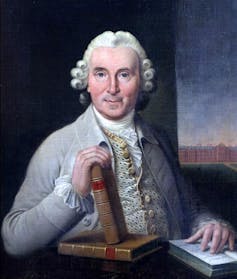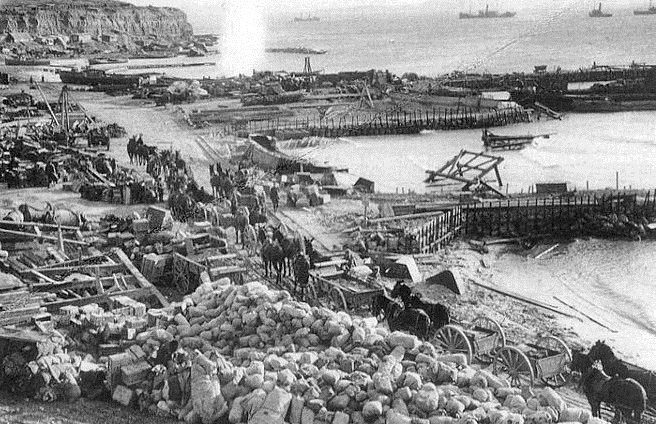Reading time: 5 minutes
Everyone knows that Britain’s conclusive victory over Napoleon was at Waterloo. The story of that day – the squares of infantry repulsing cavalry charges, the Imperial Guard retreating under murderous musket fire delivered by a red line of soliders, the just-in-time arrival of Field Marshal Blücher’s Prussian army – is one of excitement, horror and heroism. However, Britain’s biggest contribution to Napoleon’s defeat was much less romantic. It involved the first randomised controlled trial.
By Andrew George, Brunel University London
Without the trial, the years of blockades of French ports by the Royal Navy would not have been practical. The blockade kept the French fleet confined, preventing Napoleon from invading Britain. It gave the British freedom to trade across the world, helping finance not only the British but other European armies and nations. It threatened France’s trade and economy, which forced Napoleon to order the continental system: a Europe-wide embargo against trade with Britain. He invaded both Spain and Russia to enforce this boycott – actions that ultimately brought about his downfall.
Blockade work was often tedious, always dangerous. Navy frigates, keeping close to the shore, would watch the French ports, using signal ships to notify the main fleet over the horizon if the French were to sail. The ships (and sailors) had to maintain station for months without relief. In 1804-5, Admiral Horatio Nelson spent ten days short of two years on HMS Victory, never stepping on dry ground, most of the time enforcing the blockade of Toulon.
The scourge of scurvy
The ability of the sailors of the Royal Navy to operate for such long periods at sea was remarkable. For most of the 18th century, ships could only stay at sea for relatively short periods (six to eight weeks), without the sailors developing scurvy.
Victims would feel weak, bleed at the gums, old wounds would break down and they would get infections. In the later stages of scurvy, sailors would have hallucinations and could go blind before dying.
More sailors died from scurvy than enemy action. In 1744, Commodore George Anson of the Royal Navy returned from a nearly four-year circumnavigation of the globe with just 145 men left from the original complement of 1,955. Four died as a result of enemy action. Most of the rest died from scurvy.
This was not unusual – 184,889 sailors were enlisted into the Royal Navy during the Seven Years’ War and 133,708 died or were lost due to sickness, again mostly scurvy, and just 1,512 died in combat. There is no way that the navy could have maintained the blockade of France for so long without preventing this disease.
A breakthrough experiment
The cause of scurvy was unknown, and many cures were proposed. The Portuguese explorer, Vasco da Gama, made his men use urine as a mouthwash, an intervention that did not prevent nearly two-thirds of them dying from scurvy.
The breakthrough experiment – the first randomised controlled trial – was carried out by Scottish Royal Navy surgeon James Lind in 1747. After eight weeks at sea on HMS Salisbury, there was an outbreak of scurvy. He took 12 sailors with the disease and, ensuring the cases were as similar to each other as possible, he put them together in the same part of the ship and gave them the same diet. He divided them into six groups and gave each group a different treatment. For example, one group was given a quart of cider every day, another had to drink half a pint of seawater. Two sailors were given two oranges and a lemon daily. After six days, one recovered and returned to duty, the other was deemed well enough to nurse the remaining ten patients.

In 1753, Lind wrote a treatise describing this crucial experiment. While others had previously used citrus fruit to treat scurvy, this trial proved its effectiveness.
We now know that scurvy is caused by lack of vitamin C or ascorbic acid, present in large amounts in citrus fruit. In the Napoleonic wars, all British sailors were issued with lemon juice or other fruit. In 1804, 50,000 gallons were purchased by the Royal Navy. The effect was remarkable. In 1809, the Naval Hospital, at Haslar near Portsmouth, did not see a single case of scurvy.
Lind’s controlled trial was essential for the defeat of Napoleon. Without it, the blockade could not have been sustained, Napoleon’s fleet could have disrupted British trade, and, more importantly, allowed the emperor to invade Britain.
Delayed recognition
The story isn’t so simple, however. It involved big admiralty egos and political infighting. Lind’s treatise was largely ignored when it was published. It took decades of work by others – notably Thomas Trotter and Gilbert Blane – to fight for the adoption of lemon juice by the navy.
It was not until 1795, after Lind’s death, that his findings were fully adopted. Other countries were also slow to follow the British example. Even though Americans knew that British sailors drank lemon juice (the origin of the slang-term “limey”), scurvy remained a major problem for soldiers in the American Civil War.
One lesson is that it is not enough to do good science and assume any finding will be instantly adopted. There are many barriers to adoption and people like Blane and Trotter who fight and overcome those barriers are as important to the story as those, like Lind, who make the original discovery.
This article was originally published in The Conversation.
Podcasts about scurvy in the Napoleonic era Royal Navy
Articles you may also like

Twelve days at Anzac: the evacuation
Over one hundred years ago, one of the most remarkable operations in military history occurred at the Dardanelles with the evacuation in December 1915 of 83,000 Australian, New Zealand, British and Indian troops from the Gallipoli Peninsula without a single loss of life. It will, as, one contemporary German correspondent reporting from the Turkish lines exclaimed, ‘stand before the eyes of all strategists as a hitherto unattained masterpiece’.

General History Quiz 203
1. How long was the Inca Empire in existence?
Try the full 10 question quiz.
The text of this article is republished from The Conversation in accordance with their republishing policy and is licenced under a Creative Commons — Attribution/No derivatives license.









